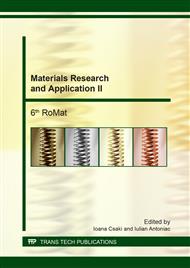p.129
p.137
p.142
p.148
p.153
p.159
p.164
p.168
p.175
Sequential Casting of Functionally Graded Material
Abstract:
Functionally graded materials (FGM) are used for components with specific characteristics required by the considered area of application. In this research, functionally graded material is obtained with sequential casting process of two different aluminum alloys. They are poured into the mould, aiming to obtain within the same component high thermal resistance and mechanical strength on one side and ductility and elongation on the other side.The new casting has high potential, especially in the production of automotive components, e.g., pistons. Usually, piston alloys are eutectic Al-Si alloys, with high percentage of other alloying elements which increases the thermal resistance of the material. However, this high concentration of alloying elements leads to a considerable reduction of the material’s elongation that is not always tolerable. The low ductility can be an issue for the inferior part of the piston that is more subjected to fatigue stress. To increase the elongation, in addition to the alloy used for the manufacturing, a hypoeutectic Al-Si alloy is considered in the sequential casting of the FGM, that in turn gives rise to a superior ductility in the component.The purpose of this research is the optimization of the manufacturing process parameters of a functionally graded material to be used for the production of a more performing element. In particular, the produced piston shows a superior resistance at high temperatures in the area which it is in contact with the gas combustion and, simultaneously exhibits a superior fatigue life on its lateral part.
Info:
Periodical:
Pages:
153-158
Citation:
Online since:
August 2017
Authors:
Price:
Сopyright:
© 2017 Trans Tech Publications Ltd. All Rights Reserved
Share:
Citation:


